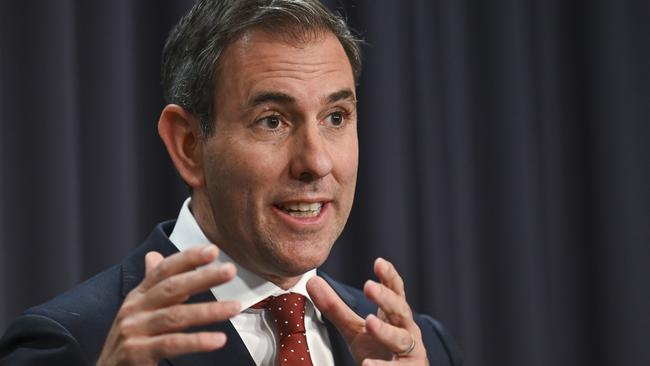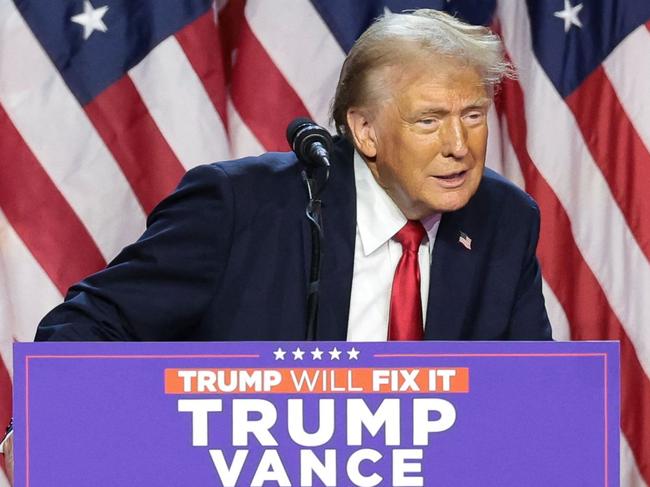
Jim Chalmers has not been idle, or as timid as his recent predecessors, in trying to reform some of the more arcane aspects of rules governing the nation’s supply side.
The Treasurer is now putting a $900m pot of money in reach of the states to incentivise them to remove regulatory barriers; the provinces take the money, absorb the pain, and Canberra gets a higher tax take from a bigger national economy.
According to Productivity Commission modelling, the increase to GDP from this move could be huge, as it was in the past, but it depends on what gets done.
Yet every constructive and careful endeavour on merger reform or reviving national competition policy from the PC or Treasury brains trust is undercut by busybody misadventures in workplace laws or industry policy.

We keep making it harder for ourselves, with PC chairwoman Danielle Wood warning in April that Anthony Albanese’s Future Made in Australia plan would divert investment from more productive parts of the economy and lead to higher-than-necessary costs for taxpayers.
Chalmers receives the best advice money can buy on improving our performance, but it invariably runs into the dead zone of the Prime Minister’s left-dominated cabinet or the veto of the labour movement.
The interventionists are in the ascendancy, as they are in most rich nations, and pragmatic economists in the ranks can’t win the contest of ideas – instead, they are conscripts to a losing cause they don’t believe in.
Plus you have governments responding to megatrends such as ageing, changing the structure of the economy by expanding taxpayer-funded employment in health, disability services, aged care and childcare.
That is crowding out the private sector but also shifting resources to sectors where productivity gains are notoriously hard to win (and measure).
Manufacturing subsidies double down on a low-yield bet with our precious capital and labour.
What all this leads to, as PC deputy chair Alex Robson describes it, is a deadlock: no matter what the big-picture economic conditions, we can’t break out of the pre-Covid malaise.
We’ve been in a productivity slump, which means we hit an inflationary speed limit at even modest rates of GDP growth.

Last week, in its quarterly update, the Reserve Bank revealed it is now more worried about our dismal labour productivity, which is still only at 2016 levels.
Stagnant productivity “weighs on the economy’s potential supply”, RBA staff said, and poses a risk of higher inflation, especially with our robust labour market.
If productivity does not return to its long-run average – a key assumption in all official forecasts – that would slow our progress in beating inflation.
It means higher interest rates.
There was a short-lived productivity surge during the pandemic as lagging industries were put in suspended animation, but when restrictions eased we reverted to our poor run of form.
“This bubble has now well and truly burst,” the PC’s Robson said in September.
Every Canberra logroller and spiv lobbyist – from the care sector to net zero – knows they must dangle the P-word when they are begging for a tax break or subsidy.

Again, the rent-seekers hold us back from getting our growth engine in better shape.
A lot is going on beyond our shores and risks abound for an honest trading nation such as ours when Donald J. Trump resumes his tenancy of the White House next year.
So we should try to control what we can, spruce up our game and inject more dynamism into our economy – that means more disruption, of course, but higher reward for effort.
“We need to focus on lifting our growth potential by driving the productivity uplift that will underpin higher wages,” PC boss Wood said the other day.
For instance, we have an opportunity to ditch so-called “non-compete clauses” in employment contracts, which leave workers as much as $7bn a year worse off.
As one former senior Canberra official says, Labor “burnt political capital on re-regulating the labour market to the detriment of productivity, but now they have a pro-worker productivity-enhancing structural reform looking them in the face and they’ve got to follow through”.
We need more uplift, such as the new merger laws and incentive payments to the states for reform, and fewer dead ends through failed and junk policies.






If productivity policy is a “game of inches”, as Canberra’s top independent adviser in that space puts it, the Albanese government is starting miles behind in its quest for a more dynamic and high-performance economy.